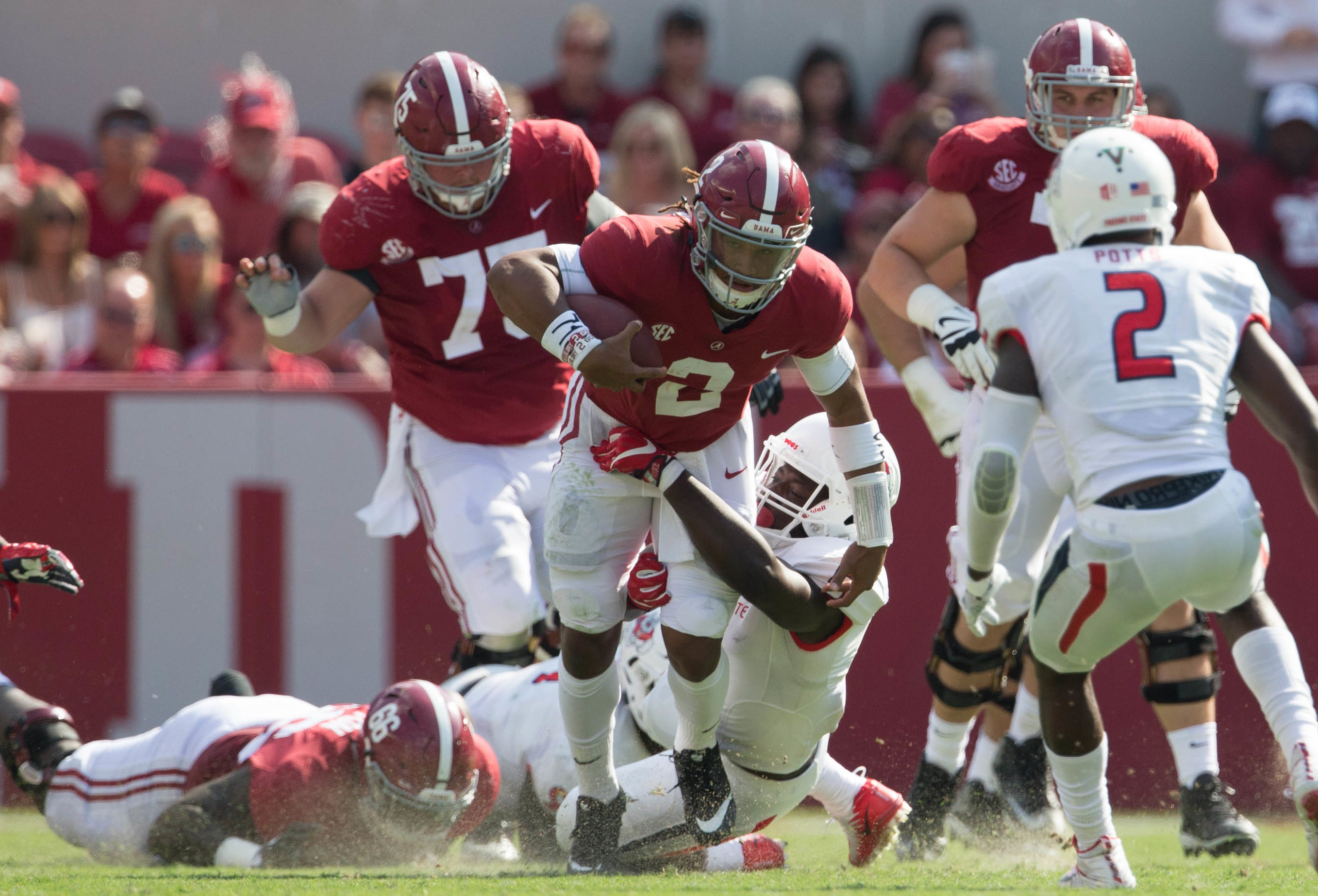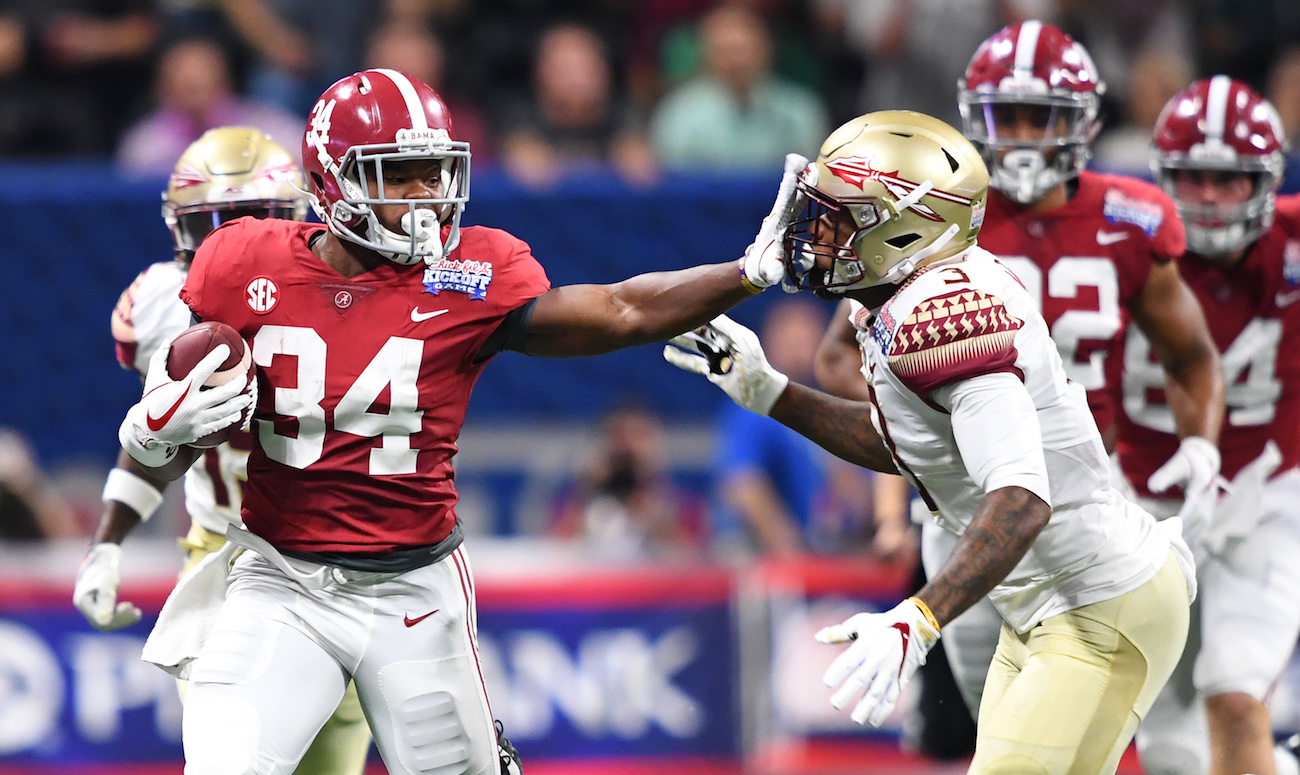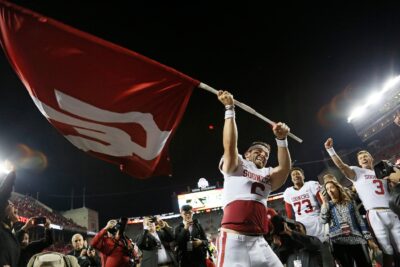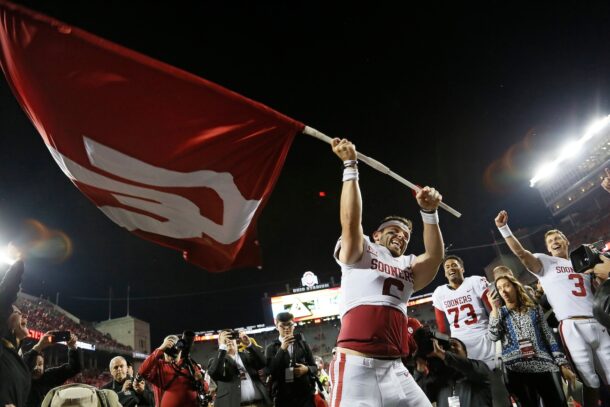
Alabama’s vertical passing game is struggling for multiple reasons
By Clint Lamb
Published:
Alabama has cruised to a 2-0 record to start the season, but the Crimson Tide have done so without a crucial element to their offense — the vertical passing game. This is after the coaching staff had spent the offseason developing Jalen Hurts as a downfield passer, so one would think they understand the importance of adding a weapon like that to the arsenal.
There’s no denying that the Tide has succeeded in the past without a consistent downfield attack, but could that deficiency cause issues later this season? The answer is simple: It absolutely can.
The bottom line is that the lack of a downfield passing game doesn’t solely fall on Hurts’ shoulders. Yes, he’s only completing 30 percent of his passes of 10 yards or more this season, but a lot of working parts must come together to make that aspect of the offense successful. Alabama has failed in more than one of those areas.
Here’s a look into some of the problems.
Struggles in pass protection
Heading into the season, a lot of changes being were made to Alabama’s offensive line. Two starters were gone, including former Outland Trophy winner Cam Robinson. To replace Robinson, Jonah Williams made the transition to Hurts’ blind (left) side, which requires the same technique as the right side but with everything opposite.
While Williams continues to show what made him such a highly coveted prospect coming out of Folsom High School in California, the transition hasn’t come without struggles. Overall, he has continued to excel, but he hasn’t seemed quite as comfortable as last year.
The main concern, however, has been on the right side of the offensive line. Lester Cotton, who started five games last season at guard (two on the left, three on the right), continues to be inconsistent. Even former offensive lineman Alphonse Taylor, a right guard for Alabama from 2013 to 2016, turned to Twitter to share his opinion on Cotton.
Lester cotton not looking like a starter right now
— Alphonse Taylor (@SHANKK50) September 9, 2017
In addition, Matt Womack is also still getting his feet under him after his first two career starts, though he improved against Fresno State. One issue with Womack is that he opens his hips too much, leaving himself exposed when taking his pass sets. It’s an issue that Williams has been caught doing as well, but Womack has been guilty of it more frequently.
It’s going to take some time for the unit to gel, but the line has to give Hurts better protection if Alabama wants to pass downfield more.
Struggles in the run game
This area might not seem like a big issue in relation to the passing game, but Alabama’s run game has to do a better job creating on early downs to make things easier for Hurts on later downs.
This aspect was especially evident against Florida State, where the offense was constantly struggling to run on first down. On multiple occasions Hurts was left with second and 7 or longer, which puts the offense behind early in drives.
When a team can create situations involving second and 6 yards or less — which Alabama has done consistently in the past — following play calls, such as play-action passes, are much more effective.
The statistics don’t indicate that this had been a problem yet, but it has been. Against a weaker Fresno State front seven, it wasn’t nearly as much of an issue, but Florida State was a different story. In two games, Damien Harris leads the team in rushing yards with 105, only 52.5 yards per game.
The Crimson Tide will hope that there was real improvement from Week 1 to Week 2 in this area — and not just a result of the opponent — but they really won’t know for sure until another formidable defense lines up across from them.

Hurts’ inability to keep his eyes downfield
There is no doubt that some of the blame for the Tide’s deficiencies in the downfield passing game are a direct result of a Hurts shortcoming.
Through two weeks, Alabama has 144 passing yards per game, tied for 112th of 129 FBS teams.
No, the offensive line hasn’t done a good enough job of giving the quarterback the confidence to let plays develop, but the proper protection and correct situation has been there at times. Hurts has to do a better job of recognizing when he can maintain his presence in the pocket.
Until all three of these things can come together, Alabama’s inability to push the ball downfield will continue to be a problem. That deficiency could’ve already cost the team a loss if not for a few game changing plays from the defense and special teams against Florida State.
Can those units continue to make up for the lack of a vertical passing game? It did for 14 games last season, but not when it truly mattered. They might not be so lucky against a team like LSU or Auburn later this season.
Clint helps cover the SEC West for Saturday Down South. His work can also be found on USA TODAY Sports, The 'Bama Beat podcast and The Bullpen with TonyMac and The Lamb. Previous stops include SEC Country, 247Sports and Touchdown Alabama Magazine.







